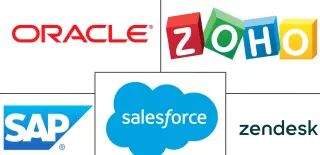How to launch an indie game on Steam

Launching an indie game on Steam can be both thrilling and overwhelming. With over 50,000 games on the platform and 30+ new releases daily, standing out requires strategic planning. This step-by-step guide covers everything from Steam Direct registration to post-launch marketing, with actionable tips from successful indie developers.
Why Publish on Steam? Key Benefits
- Massive audience – 120+ million monthly active users
- Discovery algorithms – Steam recommends games based on user behavior
- Built-in features – Achievements, cloud saves, and workshop support
- Revenue share – 70% standard (can increase to 80% after $10M in sales)
- Community tools – Forums, reviews, and direct player feedback
Steam Launch Checklist Timeline
- 1 6-12 months before launch: Create Steam page, start wishlist campaign
- 2 3-6 months before: Build email list, plan influencer outreach
- 3 1-3 months before: Submit for Steam Next Fest, finalize press kit
- 4 Launch week: Maximize visibility through Steam algorithms
- 5 Post-launch: Run discounts, engage with community
Step 1: Prepare Your Game for Steam
Technical Requirements
Before submitting to Steam Direct, ensure your game meets these technical standards:
- Windows compatibility (7/10/11) – Mac/Linux optional but recommended
- Resolution support – Minimum 1280×720, ideally 16:9 aspect ratio
- Input methods – Clear labeling for keyboard/mouse/controller
- Performance – Stable 30+ FPS on minimum specs
Essential Game Assets
You'll need these marketing materials for your Steam page:
Visual Assets
- Header image (1920×620px)
- 4-6 screenshots (1280×720px)
- Square logo (512×512px)
- Vertical capsule (600×900px)
- Trailer (30-90 seconds)
Text Content
- Game description (1,000 chars)
- Short description (300 chars)
- Developer/publisher bios
- System requirements
- Tags (20+ relevant ones)
Step 2: Steam Direct Submission
To publish on Steam, you'll need to:
- Pay the $100 fee per game (recoupable after $1,000 in sales)
- Complete tax/banking paperwork (requires EIN or SSN)
- Pass identity verification (photo ID required)
- Submit your game through Steamworks (Valve's developer backend)
Pro Tip:
Submit your game at least 2-3 months before launch to account for review times. Valve typically takes 3-10 business days to approve new submissions.
Step 3: Optimize Your Steam Page
Crafting a High-Converting Page
Your Steam page is your storefront. Follow these best practices:
- Trailer first – 80% of visitors watch it
- Show gameplay immediately – No cinematic-only screenshots
- Clear genre tags – Helps Steam's recommendation algorithm
- Localized text – At least English + 1-2 major languages
Wishlist Campaign Strategy
Wishlists directly impact your launch visibility:
Pre-Launch Tactics
- Run Steam Next Fest demos
- Partner with key curators
- Offer exclusive content for wishlisters
Ideal Wishlist Goals
- 5,000+ for decent launch visibility
- 20,000+ for potential front page featuring
- 10-20% conversion to sales at launch
Step 4: Pricing & Discount Strategy
| Game Type | Average Price | First Discount | Best Discount % |
|---|---|---|---|
| Narrative/Adventure | $14.99-$24.99 | 6-8 weeks post-launch | 20-30% |
| Roguelike/Indie RPG | $9.99-$19.99 | 4-6 weeks | 25-40% |
| Simulation/Strategy | $19.99-$29.99 | 8-12 weeks | 15-25% |
Step 5: Launch & Post-Launch Strategy
Launch Week Tactics
- Time your launch – Tuesdays at 10AM PST perform best
- Engage with reviews – Respond to player feedback
- Run limited-time events – Twitch streams or developer Q&As
Long-Term Marketing
Content Updates
- Add Steam Achievements
- Release free DLCs
- Enable Steam Workshop for mods
Sales Events
- Participate in Seasonal Sales
- Bundle with other indie games
- Offer soundtrack editions
Essential Steam Launch Tools
SteamDB
Track competitors' performance and pricing history
HowLongToBeat
Submit your game for playtime tracking
Steamworks Documentation
Official API and feature guides
Common Mistakes to Avoid
- Launching without wishlists – Less than 1,000 leads to poor visibility
- Ignoring Steam events – Next Fest and seasonal sales boost discoverability
- Overpricing – 90% of indie games sell best under $20
- No post-launch plan – 60% of sales often come after launch month
Indie Game Launch Budget Example
- Steam Direct fee: $100
- Trailer production: $500-$2,000
- Press coverage (optional): $300-$1,000
- Key distribution: $200-$500
- Total Estimated Cost: $1,100-$3,600
FAQs About Steam Launches
How many copies do indie games typically sell?
The median indie game sells under 1,000 copies. Top 10% sell 10,000+, and breakout hits sell 100,000+. Having realistic expectations is crucial.
Should I use Early Access?
Only if you need player feedback for development. Early Access games see 30-50% lower launch sales than full releases.
How important are Steam reviews?
Games with 90%+ positive reviews get 3-5x more visibility. Never buy fake reviews—Valve bans offenders.
Final Pro Tip:
Analyze similar games using SteamSpy and SteamDB before launch. Look at their price history, review counts, and concurrent player peaks to set realistic targets.
You might also like
Popular Articles

How to Price Your Indie Game for Maximum Profit (Steam vs Itch.io vs Epic)

How to sell game assets on Unity Store

From Hobby to Profit: How to Turn Your Gaming Passion Into a $100K Business

Best business setup for content creators (LLC vs Sole Proprietor)

AI Video Editing Tools Tested: Which Actually Save Time?
